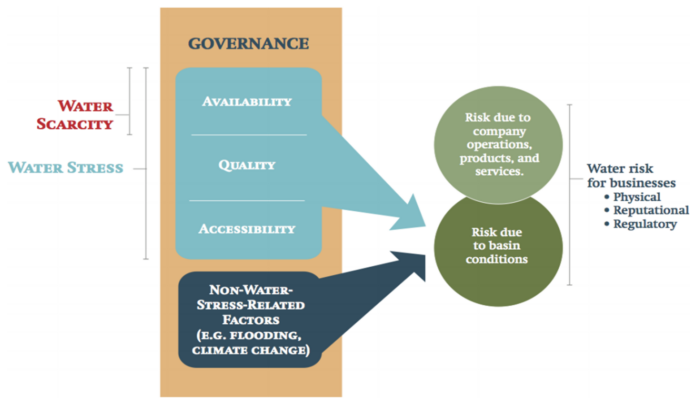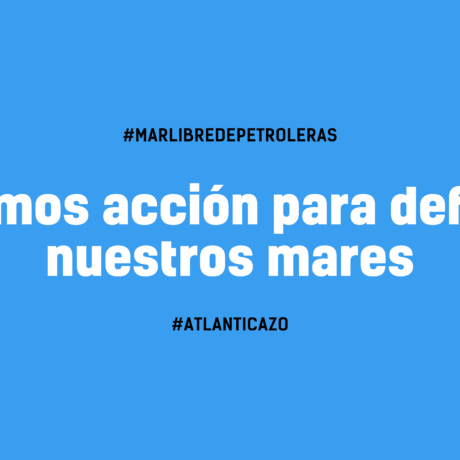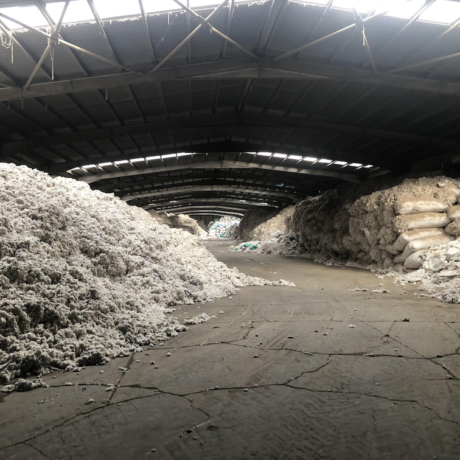Why fashion brands need to prioritise water conservation from an investor’s perspective
The world is facing a number of unprecedented and urgent environmental crises. In January 2019 the World Economic Forum released its 14th edition of the annual Global Risks Report warning that we only have 12 years to stay under 1.5°C [1]. Rising temperatures will have a profound impact on the world’s water sources, including rising sea levels, higher risk of flooding and droughts, accelerating water scarcity, pollution, disruption of freshwater systems and more.
Water crises remain within the top ten risks to society [1]. 90% of the world’s natural disasters are water-related [2]. 2 billion people live in countries exposed to high water stress – population growth, increased water demand, and climate change are likely to exacerbate this [3].
When we talk about water crises, we consider three key dimensions:
Water scarcity – the abundance, or lack thereof, of freshwater resources
Water stress – the ability, or lack thereof, to meet human and ecological demand for fresh water; compared to scarcity, “water stress” is a more inclusive and broader concept
Water risk – the possibility of an entity (community, country, company) experiencing a water-related challenge (e.g. water scarcity, water stress, flooding, infrastructure decay, drought)

Image source: CEO Water Mandate
Water is a contextual issue, being both localised and impacting fashion businesses in different ways — through company’s direct operations, supply chains and sometimes both. This makes water a highly complex and globalised problem and one that can have significant positive impacts if solved.
Water-related risks in the global apparel sector
The apparel sector is particularly vulnerable to water-related risks because water is used throughout the production of raw materials like cotton and manufacturing processes such as dyeing, tanning, printing and laundering.
Cotton is currently estimated to be the most widely used material in the apparel industry [5], making up 33% of global textile production [6]. It is a very thirsty crop, with just one pair of jeans and one t-shirt comprising one kilogram of cotton and requiring an estimated 10,000 litres of water to produce [7].
China supplies 30% of the global cotton market and manufactures a vast amount of the world’s clothing. As a result, Chinese legislation has a huge impact on both the global economy and the planet’s ecosystems. Whilst China has adopted some of the strictest regulations on heavily polluting sectors including textiles and apparel, including its 13th Five-Year Plan for Ecological & Environmental Protection (2016-2020) and the Water Pollution Prevention and Control Law [8], it remains an important country in terms of water-related risks.
India and the United States are also large cotton producing nations, where droughts are increasingly prevalent. This can impact the global market in significant ways. For example, the last major spike in the price of cotton was in 2011, where the price per pound exceeded $1.90, up 150% from early 2010 [9]. The shortage of supply was in part linked to widespread drought conditions in China and the US. These rising costs put major fashion brands and retailers in a financially tricky position. They had to make a tough choice — they could either pass on the increased cost of cotton to price-sensitive consumers or absorb the costs in their already tight profit margins, i.e. the price of the raw material went up and so everyone along the chain potentially had to shoulder that cost.
Investors want to understand how companies are addressing water-related risks
Since then, the cotton price hasn’t reached such extremes but the impact to raw material costs remains a significant risk to apparel companies. That is why investors look to understand how well companies are preparing themselves for future price shocks triggered by water-related risks, amongst other factors. Effective water management in a company’s direct operations and across its supply chain is critical, particularly as global water resources become increasingly stressed. Good water management must include board level oversight of water-related risks and thorough water risk mapping processes.
River basins are important water sources for textile and apparel suppliers and their surrounding communities. If one company happens to be polluting the water basin upstream, the downstream residents may end up drinking and bathing in polluted and unsafe water and other downstream suppliers who rely on that river basin may be negatively affected.
Fashion companies need to understand who else is using the same water supply, what forms of agriculture rely on that water supply, whether the water supply is located in a densely populated area and what communities rely on that water source for their everyday needs. This is why fashion brands and retailers must effectively assess these risks and develop holistic water management strategies and systems, covering both direct operations and supply chains – though the supply chain is even more important, given that is where the majority of the risk lies for clothing brands.
Good water management practices are key
Companies should be setting targets for improvements in water management practices, monitoring progress and disclosing the results of their efforts in consistent and comparable ways [10]. This is the only way that fashion brands and retailers will do their part towards achieving targets 6.3 [11] and 6.4 [12] of the SDGs, which aim to improve water quality, increase water-use efficiency and protect water-related ecosystems.
This article was kindly contributed for our online course, Fashion’s Future and the Sustainable Development Goals by Emma Lupton from BMO Global Asset Management. To find out more about Emma’s work, please visit the BMO website
References
- WEF. Global Risks Report 2019. 14th Edition. 2019. Available at: http://www3.weforum.org/docs/WEF_Global_Risks_Report_2019.pdf
- UNISDR. The Human Cost of Weather-Related Disasters 1995-2015. 2015. Available at: https://www.unisdr.org/2015/docs/climatechange/COP21_WeatherDisastersReport_2015_FINAL.pdf
- UN Water. SDG6 Synthesis Report 2018 on Water and Sanitation. Centre for Research on the Epidemiology of Disasters. 2018. Available at: https://www.unwater.org/publications/highlights-sdg-6-synthesis-report-2018-on-water-and-sanitation-2/
- CEO. Water Mandate, Understanding Key Water Stewardship Terms. 2019. Available at: https://ceowatermandate.org/terminology/
- FAO. Profile of 15 of the world’s major plant and animal fibres. 2009. Available at: http://www.fao.org/natural-fibres-2009/about/15-natural-fibres/en/
- FAO. World Apparel Fibre Consumption Survey 2005-2008. 2011. Available at: http://www.fao.org/fileadmin/templates/est/COMM_MARKETS_MONITORING/Cotton/Documents/World_Apparel_Fiber_Consumption_Survey_2011_-_Summary_English.pdf
- Mekonnen MM, Hoekstra AY. The green, blue and grey water footprint of crops and derived crop products. Hydrol Earth Syst Sci. 2011;15(5):1577–600.
- China Water Risk. Today’s fight for the future of fashion: Is there room for fast fashion in a Beautiful China? 2016. Available at: http://www.chinawaterrisk.org/wp-content/uploads/2016/08/China-Water-Risk-Brief-Todays-Fight-for-the-Future-for-the-Future-17082016-FINAL.pdf
- Financial Times. Cotton prices surge to record high amid global shortages. 2011 Feb 11. Available at: https://www.ft.com/content/3d876e64-35c9-11e0-b67c-00144feabdc0
- CEO Water Mandate. Exploring the case for corporate context-based water targets. 2017. Available at: https://www.ceowatermandate.org/files/context-based-targets.pdf
- Sustainable Development Goal 6 Clean Water and Sanitation, Target 6.3; By 2030, improve water quality by reducing pollution, eliminating dumping and minimizing release of hazardous chemicals and materials, halving the proportion of untreated wastewater and substantially increasing recycling and safe reuse globally.
- Sustainable Development Goal 6 Clean Water and Sanitation, Target 6.4; By 2030, substantially increase water-use efficiency across all sectors and ensure sustainable withdrawals and supply of freshwater to address water scarcity and substantially reduce the number of people suffering from water scarcity.








